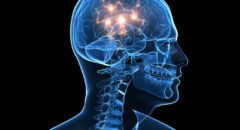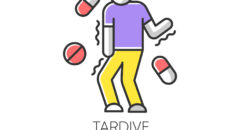 Tardive Dyskinesia is a rare condition affecting the nervous system, often caused by long-term use of some psychiatric drugs that treat common conditions like bipolar and Alzheimer’s disease. Although there are fewer than 200,000 cases per year in the U.S., many still know little information on this condition yet there are 8 types of specific tardive dyskinesias that even more people have never heard of.
Tardive Dyskinesia is a rare condition affecting the nervous system, often caused by long-term use of some psychiatric drugs that treat common conditions like bipolar and Alzheimer’s disease. Although there are fewer than 200,000 cases per year in the U.S., many still know little information on this condition yet there are 8 types of specific tardive dyskinesias that even more people have never heard of.
According to Medscape.com, here are 8 specific tardive dyskinesias resulting from long-term use of dopamine antagonists that may occur concurrently and even last for years if not a lifetime:
Tardive Akathisia is manifested by repetitive tapping, squirming, and marching movements. It occurs as the dose of the dopamine antagonist is decreased after long-term treatment. People with akathisia complain of inner restlessness and the inability to remain still. Unlike other movement disorders, akathisia can be diagnosed solely on the basis of the patient’s subjective symptoms in the absence of any objective signs.
Tardive Blepharospasm is defined as the presence of repetitive sustained contractions of the orbicularis oculi that have lasted for at least 1 month and that developed during or within 3 months of the discontinuance of treatment with dopamine antagonists (in the absence of other disease or familial causes). Symptoms of tardive blepharospasm fluctuate. Fatigue, anxiety, work, and light exacerbate tardive blepharospasm, whereas rest and sleep help to relieve it.
Blepharospasm, which is repetitive, forceful, and is a sustained contraction of the orbicularis oculi, may occur as an isolated symptom. When it occurs in conjunction with dystonia of the lower face, jaw, and neck, it is referred to as Meige Syndrome. Although blepharospasm has been reported with dopaminergic and sympathomimetic agents and antihistamines, it has also been associated with long-term treatment with dopamine antagonists.
Tardive Dystonia occurs in 1-2% of individuals during long-term treatment with dopamine antagonists. It must be differentiated from acute dystonia, which occurs in the first days of neuroleptic treatment or after an increase in the dose. Tardive dystonia presents as fixed posturing of the face and neck (eg, anterocollis, retrocollis, torticollis), extremities, and trunk. It may be either localized, involving 1 or more body parts, or generalized. Unlike tardive dyskinesia, tardive dystonia may improve with anticholinergic medication.
Torsion Dystonia is an inherited disorder in childhood that typically occurs in







